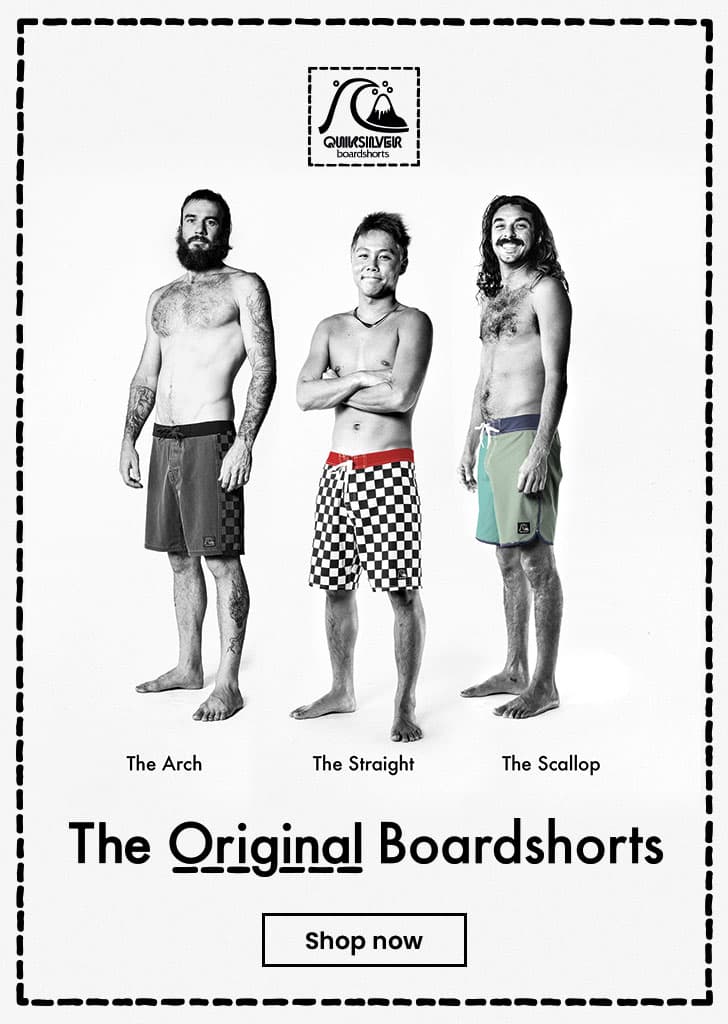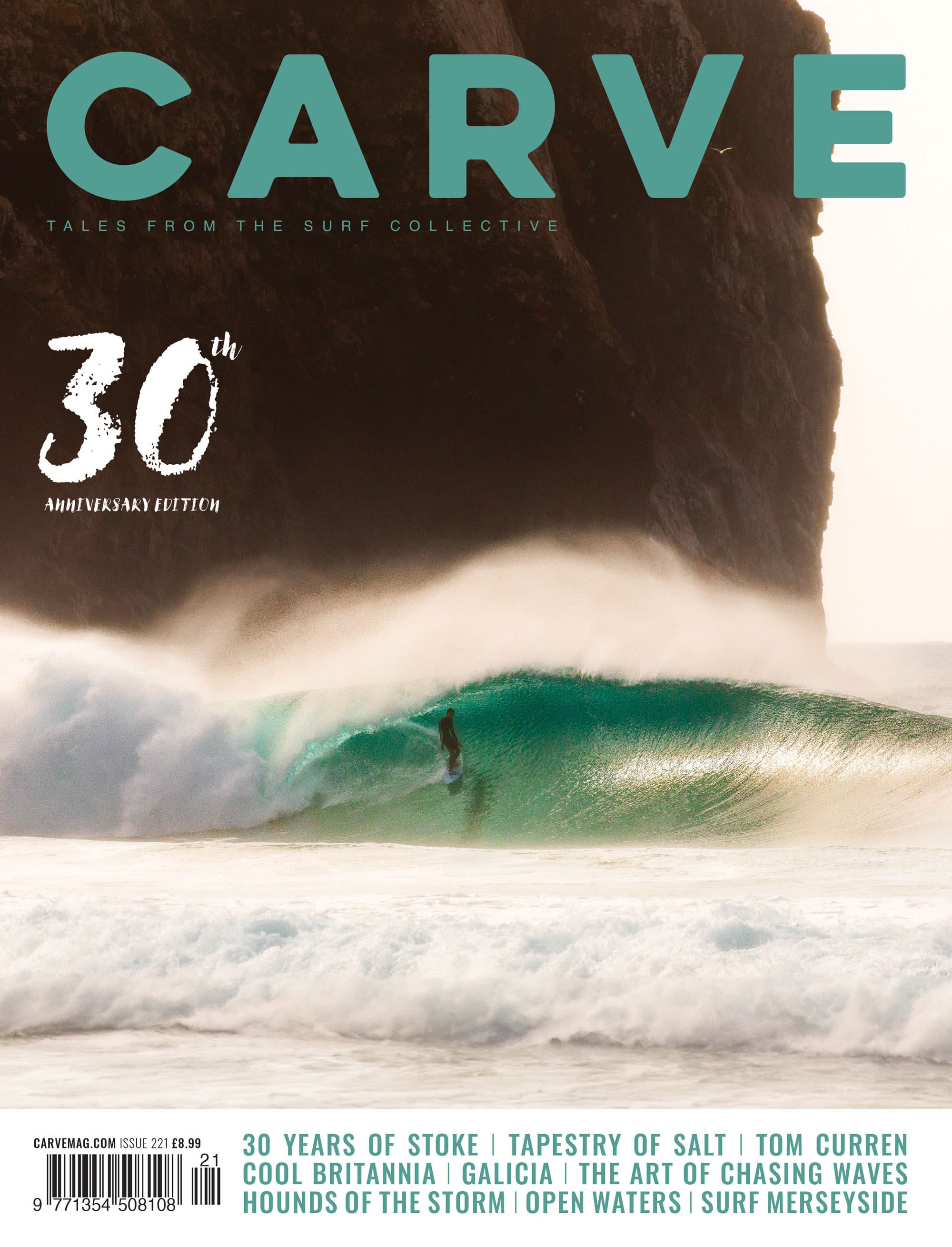The conversation slash kerfuffle generated by Mick’s run in with the Snake made it timely to unearth this piece from the archives. So many internet warriors are convinced they know exactly where it is posting grid refs with certainty. Hand on heart we don’t know, as the story goes only the handful of folks involved know, and we don’t really want to either.
Knowing moments like this are out there is the point. Not a Google Earth search blabbing lots of potential sandbars in war zones or banging on about inevitable crowds and giveaways when there’s not a landmark to be seen. It’s sandy, they drove in and that’s all there is too it. And FYI it was flat on the date of the shoot in the majority of the popular FB theorists picks. It could be anywhere in the tropics. It might break once every five years. Who knows. That’s all you need to know. It does raise the question of ethics (not Essex, we won’t mention the superbank there) in surfing. Which the following essay explores:
Have you got a secret spot?
A real secret spot. One that you never, ever, EVER, mention to other people. A spot that is only surfed by you or just you and a tight local crew? A wave that’s never been on Facebook, Instagram, in a guidebook, a TV doc, a magazine or pimped in a video?
Didn’t think so.
You’re too late. That ship has sailed my friend. The era of secret surf havens has all but passed (well it had, thanks for proving me wrong Mick).
The reasons: Google Earth, people can’t keep their gobs shut, everyone has a cameraphone with them at all times now and in the last few years the all pervading tentacles of Facebook and Instagram have blown the lid off some spots once deemed sacred. Not to mention the old school: 50 years worth of surf magazines, guidebooks, films and surfer fish tales not all of which were that subtle. Add in the exotic, remote, hard to access, previously awesome, feral secret spots being colonised by expensive pay-to-play surf camps and safari boats and you can see we’re in a bit of creek/paddle situation.
Back in the day (as in last millennia when the years began with a 19) nobody was particularly bothered by the concept of the ‘secret spot’. They existed, of course, but they were secret, and devoted, small local crews knew how to keep it that way.
Crowd pressure wasn’t an issue you see. Surfing was more of a brotherhood back then. You used to honk at another car with boards on the roof and throw a shaka. As it was honestly a rare thing to see other surfers away from the marquee beaches.
Wherever surfers gathered (subtle code for ‘the pub’) they would talk story and share information verbally. This was pre-internet. Information moved at a, from our current perspective, a geologically slow pace. Back then was pre-guidebooks. Accessing Mr Google from a pocket computer and having satellite imagery at your fingertips was a long way off. So being a hardcore British surfer was an ongoing quest. A mission to get the most out of your surfing: to understand the squiggly lines of the weather charts, to learn new spots and figure out when and where to go and to make the most of any available swell. There were no forecast websites. Just a few phone lines like PJ’s. So it was a hell of a lot harder.
Every little bit of info built on your personal knowledge base, maps were scrawled on, journals kept, and when, by virtue of this and some exploration, you found a spot the locals were cool: “We don’t mind you surfing here, just keep it to yourself, eh?”
It was a more caring and sharing environment. Surfing wasn’t cool. It didn’t feature in every second advert on TV. It was cold and hard. Wetsuits weren’t anywhere near as flexible, comfortable and warm as they are now. If you surfed you had weeping sores under your arm pits and around your neck. Surf schools didn’t exist on every beach. People just learnt the slow, painful, hard way, solo, by trial and error. Committed to buying a, usually totally unsuitable, dog of a secondhand board to learn on and persisted for months until it was mastered. People surfed for themselves. If you managed to persist and master the art you were welcomed by your fellow surfers with relatively open arms. If you were born after the mid-eighties odds on you won’t ever remember it being this way. You only know surfing post its mainstream tipping point.
Back at the dawning of the nineties I was at uni. Sure I had a Ned’s Atomic Dustbin inspired haircut, lumberjack shirts de-rigueur, just like Kurt and Eddie, but everything was surfing. Mid-Wales where I spent five blissful years is home to a bunch of high quality but ridiculously fickle waves, they only break properly once, or in a good season, twice a year. Deep local knowledge ensured you scored. Scouring the coast found you spots.
The recently released all-singing all-dancing Stormrider Guide that everyone was frothing about had handily missed out this corner of the world so all was well. For some unknown reason in their eyes there was no surf between North Pembrokeshire and North Wales? But no one complained.
Most of the areas waves were not in anyway secret, one of the mags published a comprehensive guide in 1989 (the reason I picked that uni in the first place), the old classic British Surfing Association handbook had basic maps and guides to the known spots and that was fine not to mention most of the main waves being in plain view from the coast road. Who would ever drive all the way up there through the tortuous mountain roads to surf anyway?
The few secluded gems were surfed by the tight local crew and our devoted handful of students. Max number in the water at the any spot was ten people, generally less, if work schedules/lectures cooperated. Generally you would surf with the few friends you shared a lift with. Or often by yourself. This was cool, some of the spots had tricky access over private land and this was agreed with the landowner. Crowds wouldn’t work.
A new uni year and a new crop of surfers arrived at the college. Doubling the number of surfers in town. No one let the secrets slip. A year passed without any of them finding out, you’d think they’d notice how the main locals always disappeared when the swell got good, but no.
My final college year started, with a strong swell, September sunshine and offshores, we were straight on our favourite secret spot.
The dismay on our, and the locals, faces as we arrived at the, remote, limited parking, gravel patch to see the college canoe club unloading along with ten other mini-mal riding, newbie surfers was palpable. The bare arses and blaring car-stereos only made it worse. The farmer was furious. How did this happen? Who blabbed? Turns out another new guidebook had an entry for this, and every other previously secret spot in the area and pretty much every other around the country with grid references, maps the lot.
After the witch-hunt the source was found to be a guy that no longer surfed, but had in the seventies. The author had befriended him over a few pints in the pub and wheedled it out of him. Result: the landowner shut his gates. Access was denied. The rot had started. And this was decades before Google Earth made it impossible to hide…
Knowing that a secret spot is yours and your mates’ special place is a fantastic feeling. Especially if you’ve bothered to pore over the Ordnance Survey maps (for the youth a ‘map’ is like Google Earth but made of paper), hiked the coast, explored on different tides and found them for yourself. It’s not a localism thing. Entry to these places is not restricted. If you’ve done the hard yards and found a spot as well then no one can begrudge you that. It’s just that a careless word to the wrong person can easily snowball to having half of the world at your once secret little nook (the recent example being the madness at a certain low key, but admittedly not totes secret, southwest left that needs a massive black hole swell to get going and breaks good about once a decade).
But the clue for modern times comes in that word: hiking. If a spot has a beach car park, is visible from a coast road or in a town you’re kidding yourself if you could have ever called it a secret spot. Quiet maybe. Under used perhaps. But secret? No. Secret does not mean hiding in plain sight. It’s the tricky thing, especially in the UK, with it being such a small, densely populated land there’s not much wild space left. The Celtic fringes with their sparser populations and greater stretches of wild coast have much more scope for protecting their charmed spots and thankfully still hold on to a few nuggets that have never been in the guides and the photogs respectfully avoid.
As for the guidebooks… It’s a tricky moral question. The ethics of surf guidebooks could be the subject of a degree thesis.
Low Pressure’s Stormrider Guide to Europe, first published in 1992, is the most famous and has spawned a host of imitators.
Anyone that surfs and travels will have used one. They come as standard in any Euro-road-tripping van. The Stormrider, as it’s become known in some circles, opened up new horizons for many.
Originally written with the assistance of prominent locals the contents managed to tactfully avoid giving away many secrets and also included some deliberate red herrings.
It’s debatable now whether the inclusion of some sensitive spots, and particularly Easter egg photos of unlisted spots, was the right way to go in later versions, but that’s water under the bridge.
No one that’s travelled can really put their hand on their heart and say they’ve not got more waves because of it. Surfer Magazine’s Travel Guides to Europe and the world’s other surf regions were legendary and oft photocopied way back when also. Keeping in mind that in the nineties the most important method of communication was the fax machine. This was how we got our pressure charts (£1.50 a pop for four days worth of badly printed isobar info) and how, if desperate you laid out the green for the Surfer guides. But they were comprehensive and thorough. So in reality the surf world was 90 percent explored, mapped and shared before most of you were born.
The ‘respecting the locals wishes’ when it comes to guides is a Pandora’s Box. It depends who you talk to. As with anything there are a spectrum of people: from rabid, anti-everybody dickhead locals that hate everyone, including the other locals through sensible, well-balanced people, to groovy, welcoming ‘the ocean is there for everyone’ dudes. If you try it’s easy to find someone that’s not bothered about sharing. It’s the same today.
Case in point: someone working for a guidebook company contacted me, wanting to use my photos from some remote islands off Norway, I declined. Citing our Norwegian surf guide (and friends) wishes that the photos only went in the magazine without naming the islands, only the country and that they didn’t want any to go to any guidebooks. Fair enough.
The company came back saying they had talked to a local from the islands and he said, ‘It was okay’ to put the islands in their book. And the more ‘spots were in the book the more the crowd can spread out’. Seeing as there weren’t any active locals on the island, or any crowd for that matter I was suspicious.
But it’s not just the guides. The world’s surf magazines have to take the major portion of the blame. Surfer magazine especially, as they actually had an active policy for years of flat out naming spots that, intentionally or not, bulldozed many secret spots off the map.
Madeira was a name unheard of in the surf world until Surfer published Ted Grambeau’s seminal trip there. A new Atlantic island big-wave paradise had been found, the photos were great.
They named the article Jardim do Mar, Portuguese for ‘Garden by the Sea’ and also, bafflingly, the name of the village where the waves were. One look in a decent world atlas and there you go. The Euro surfers that had been secretly tucking into the waves on the island since the seventies were mortified. Irony being not long after the island government ruined the wave with an ill-advised new sea defence system.
Bali and much of Indonesia are the mess they are because of unsubtle surf mag (and originally surf movie) exposure.
Kuta was a small fishing village of wooden shacks until the images of Ulus and Padang reached the outside world in the mid seventies. The film Litmus turned the world on, and indeed myself, to Ireland in the nineties. Even though it had been in the mags since the seventies. But the crowds don’t flock to the cold. People want warm holidays and the debate around sustainable development and surf tourism warrants a PhD in its own right.
But not all secret-spots are ruined by the media. The most famous case being Jeff Clark’s gift of Mavericks to the world. After surfing it for years by himself he took it public. The ‘wave will look after itself’ is the oft-repeated quote. Whether he regrets that decision now is a moot point. It is possible to find good waves and keep it on the down low. Tony Hussein-Hinde found one of the world’s great surf zones by accident after getting shipwrecked in the Maldives. He surfed the North Male atolls by himself, and later with close friends for many years, until he took it public to make a pot of cash. Now, it’s a mess of exclusivity rights and suffering from an entitled crowd of folk paying through the nose for the privilege. The certain right hand draining barrel in Mexico that went from known secret to WCT spot is pretty much unforgivable in long time Centro America devotees eyes. Ironically the sandbank there has gone to hell now anyway. Sands shift. Times change. Just look at Kepa, he breaks new spots all the time, in places that took days of travel and a lot of risk to get to. Waves in remote war torn deserts will stay quiet, no matter how sick the tubes.
One plus side: many discoveries in the last decade that occupy the bulk of the column inches in the mags are off the radar of the travelling surfer. Shipsterns Bluff, The Right, Skeleton Bay and Mullaghmore are all relatively recent ‘not secret anymore’ additions to the surf consciousness, but they won’t get crowded with anyone but pros and filmers trying to keep their mortgage payments going, because they are so damn nasty. Actual life threatening spots pandering to our car-crash-but-must-look mentality only tend to get crowded with watchers not surfers.
In the Britain there’s a strange stalemate. Many of our finest waves are rightly not in the guidebooks, because they are considered secret, which seems at odds with them being:
a) visible from a car on their respective coast roads
and
b) being surfed by all and sundry, photographed and videoed every time they break and pimped out on Instagram the very same evening.
Anyone with a bit of knowledge knows exactly where the secret-not-secret waves are. Locals serve their time and know their local spot best. Hence should get the best waves, as any visitors, hopefully, respectfully wait in line. The ugly spectre of localism, intimidation and bad vibes is not something we want in British surfing. We’re too nice for that and thankfully with a few minor exceptions we’re a good natured bunch.
It’s a simple fact: our good waves are not going to get super-crowded, you need local knowledge of the weather, they are fickle as all hell anyway, often only working for short windows of a few hours and sometimes not at all for a whole season. The last decades upsurge in surfing’s popularity doesn’t take away the fact that 95 percent of surfers are scared shitless of reefs and rocks and will never progress past beach break surfing.
And when I write “super crowded” I mean dysfunctional, Superbank/Mundaka/Uluwatu style crowds of 150+ frothers. 20 people in a line-up is a mellow crowd these days. Something which needs to be appreciated more here as in the grand scheme of things we are very lucky. And year in year out, no matter how many webisodes you see those spots maintain at a constant level. Unless you’ve been surfing for ten years plus you’ve not got anything to compare it to anyway.
There are few true secret spots left. The Internet, iPhones, Google Earth and social media have seen to that. Once a secret is out it snowballs. One FB post can be the surfing equivalent of the butterfly flapping its wings that starts a hurricane.
If you know a secret spot keep it that way. Don’t talk about it; especially online. Don’t brag about it and certainly don’t let someone get you really drunk and tease it out of you.
Don’t scoff, it happens. The location of a carbon-copy of Mundaka in the southern hemisphere, with no surfers for hundreds of miles, was divulged this way, and it’s still secret. You’ve just got to know how to keep your powder dry.
By Sharpy





